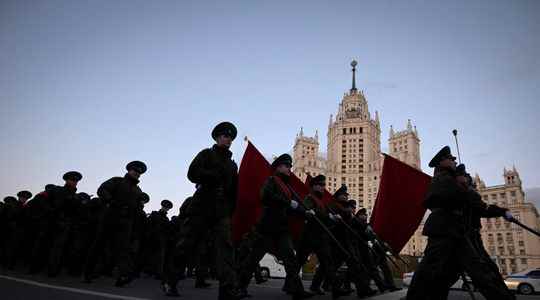Since March 25, Russia has decided not to communicate any more on the number of its soldiers who died in combat, and in a Putinian logic that likes to minimize the difficulties encountered in the “special operation” carried out in Ukraine, this silence resembles to an admission of failure. During the last communication, the Kremlin evoked the very precise figure, and surely minimized, of 1,351 fighters fallen in Ukrainian territory.
Two months have passed, the invasion has bogged down, and the death toll on the Russian side has become a strategic issue. Thus, Ukraine assures that the invader lost 30,000 men, a total which allows it to underline the heroism of its soldiers, but which seems exaggerated in view of the data provided by Western sources, evoking a range losses of between 8,000 and 15,000 men. Whatever the exact number, it remains very high, and to better understand its importance, we can compare it to the losses of another conflict, that carried out by the USSR in Afghanistan between 1979 and 1989. In ten years, Moscow had then lost about 15,000 men, equivalent to the upper range of the estimates currently provided after three months of war.
Pay and plunder to attract disadvantaged populations
If the figures differ according to the sources, the same question torments the international community: Who are these thousands of men whom the Kremlin sends to fight in Ukraine? What profiles do these “comrades in arms who died bravely in a just fight” have, as Vladimir Putin described them during the May 9 military parade in Moscow. The army engaged is a reflection of Russian society, diversified, even if “the majority of the contingent is made up of non-Slavic ethnic minorities, such as the Yakuts, the Buryats or the Caucasians of the North”, explains Galia Ackerman, specialist in post-Soviet Russia.
If they are nationals of the Russian Federation, these populations are characterized by their rurality and low level socioeconomic, which makes them more likely to be attracted by the pay paid to the soldier. The Russian-speaking site Mediazona also estimates that the Russian region deploring the most losses to date is that of Dagestan, a Republic with a Muslim majority which is among the poorest in the country. As for the Chechens, whose presence is highly publicized, they do not represent a very large number of fighters, but “100 to 200 more men per week”, according to Galia Ackerman.
The looting observed in the various cities of Ukraine can also provide information on the poverty of the soldiers, authorized by the hierarchy to build up booty. “Looting is part of a culture of war inherited from the Soviet Union”, underlines the founder of the Desk Russia site, who specifies that “everything that can be transported is brought back to Russia”, from washing machines to televisions, including linens and agricultural equipment.
Conscripts as a reservoir of forces
The other main characteristic of the Russian soldiers sent to Ukraine is their youth. Many testimonies report the presence of very young men, some under 20 years old, little experienced in combat and sometimes unable to explain their presence. However, the reform of the armed forces initiated by Putin from 2009 aimed to professionalize the army, by increasing the number of contract workers to the detriment of that of conscripts. But today, Russia seems to need them to continue its operation in Ukraine.
“The Russian government tries not to send conscripts directly, but it quickly offers them to sign a contract to become contractors,” notes Galia Ackerman. “Furthermore, it is possible that these youngsters will be pressured to sign, even if they are not ready to fight.” In fact, about 130,000 men between the ages of 18 and 27 are called up in two annual calls, but the Russian Ministry of Defense has already announced that this year’s recruitment will be higher. “If the war were to last, the conscripts would constitute a reservoir of fresh flesh”, remarks Galia Ackerman. Perhaps the last before the general mobilization.
